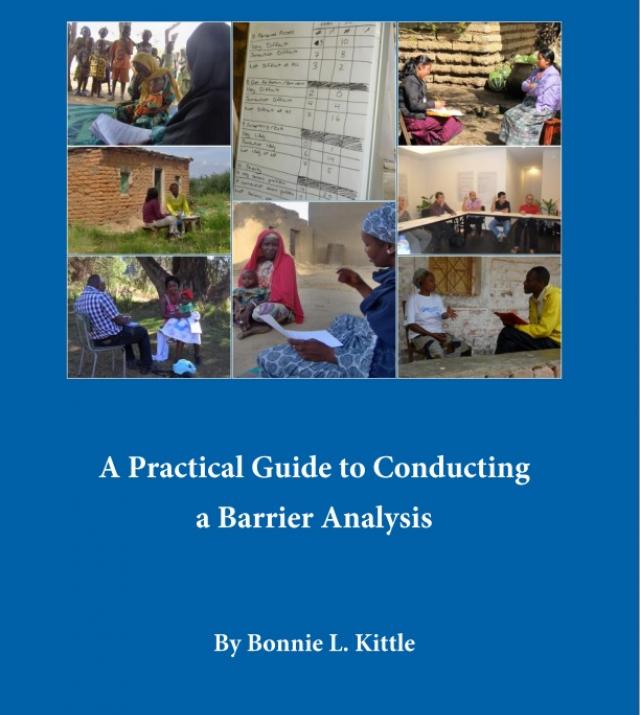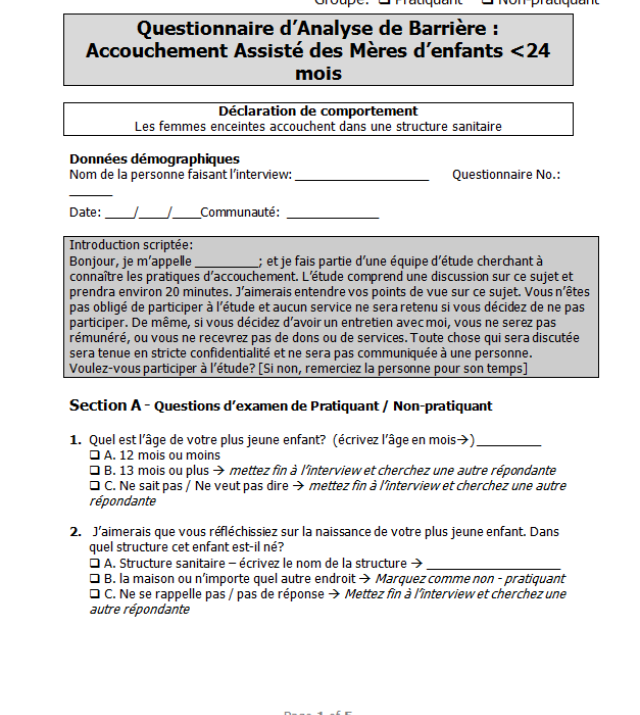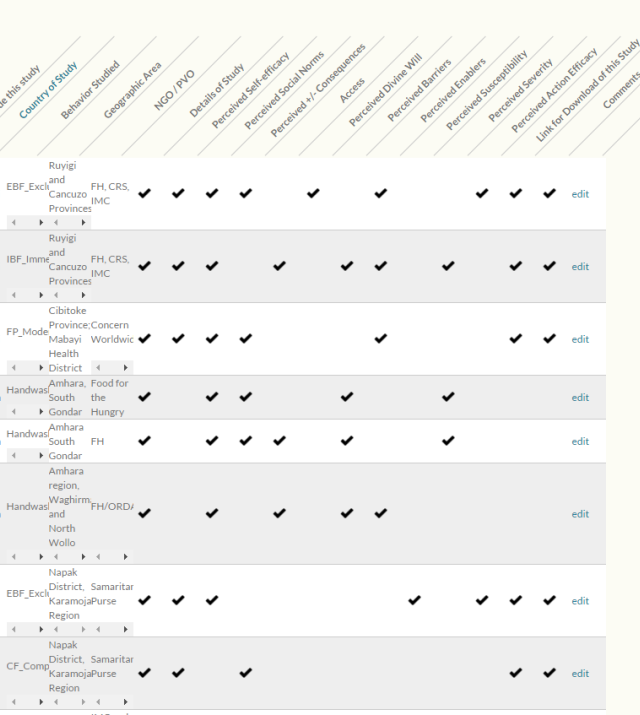
Barrier Analysis Facilitator's Guide

Barrier Analysis is a rapid assessment tool used in community health and other community development projects to identify behavioral determinants associated with a particular behavior. These behavioral determinants are identified so that more effective behavior change communication messages, strategies and supporting activities (e.g., creating support groups) can be developed. It focuses on eight determinants: perceived susceptibility, perceived severity, perceived action efficacy, perceived social acceptability, perceived self-efficacy, cues for action, perception of divine will, and positive and negative attributes of the action (i.e., the behavior). Barrier Analysis can be used at the start of a behavior change program to determine key messages and activities for intervention. It can also be used in an ongoing program focusing on behaviors that have not changed very much (despite repeated efforts) in order to understand what is keeping people from making a particular change.
This Facilitator’s Guide has been written for trainers to teach others about Barrier Analysis and/or to learn the technique themselves. It guides trainers through a step-by-step process for conducting the analysis and provides background information on the technique as well as some basic information on behavior change theory. Trainers are encouraged to adapt the materials to meet their own needs.

